This homemade fig jam is naturally sweet, fragrant with honey and vanilla, and completely free of refined sugar thanks to monkfruit. The result is a jam that feels indulgent but is lighter, fresher, and healthier than store-bought spreads.
Spread it on warm buttered toast, swirl it into yogurt, or pair it with cheese for a gourmet appetizer. Once you try making your own jam from fresh figs, you’ll wonder why you didn’t start sooner.
Why This Fig Jam Recipe Works
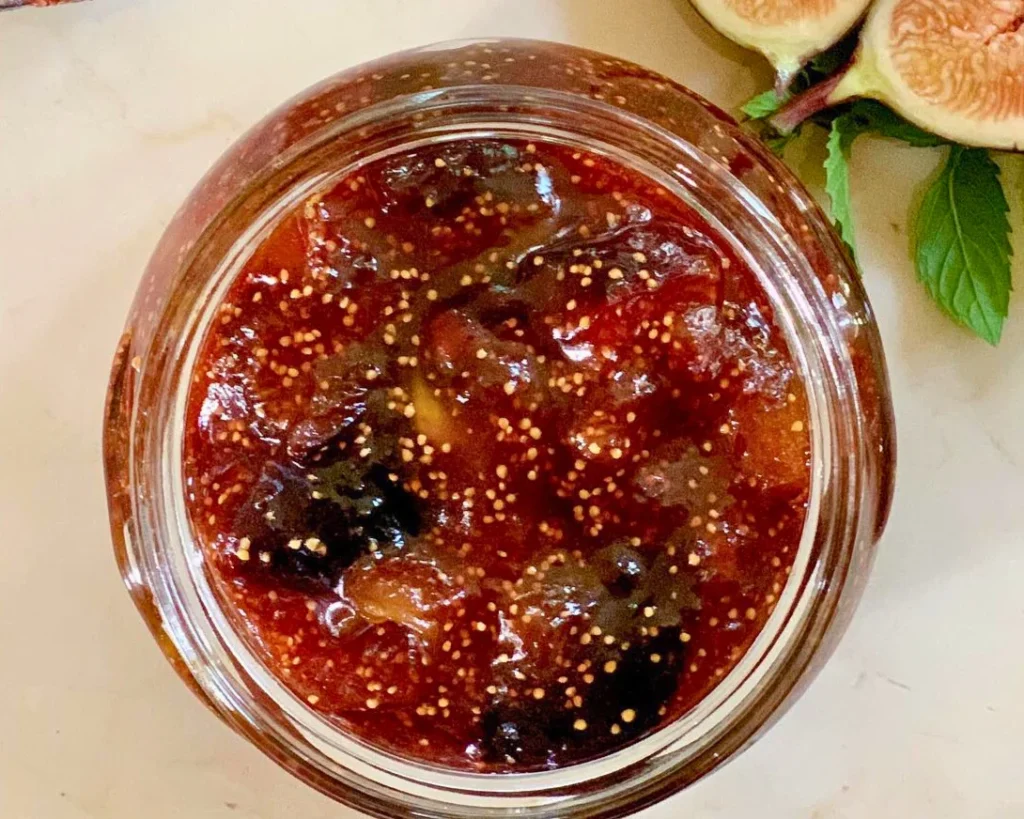
This isn’t just another jam recipe—it’s a thoughtfully crafted balance of sweet, tart, and rich flavors. Fresh figs provide a natural jammy texture that doesn’t require artificial pectin, while monkfruit keeps the recipe refined sugar-free without sacrificing sweetness. The touch of honey adds depth, and lemon juice keeps the flavors bright and prevents the jam from being overly heavy.
The vanilla stirred in at the end ties everything together with a warm, aromatic note. This fig jam feels just as special spooned over morning oatmeal as it does served with sharp cheeses on a holiday platter.
Ingredient Breakdown
Each ingredient in this recipe has a purpose, and understanding why they’re here will help you appreciate the balance of flavors.
Fresh figs are the star of the show. Choose ripe, soft figs that give slightly when pressed. Black Mission figs bring a deep, rich flavor, while green figs have a lighter, honeyed sweetness.
Monkfruit sweetener is a natural sugar substitute that keeps the jam lower in calories and free of refined sugar. It dissolves smoothly and balances the figs’ natural sugars.
Honey is more than just a sweetener—it adds floral notes and helps give the jam a glossy finish. If you prefer a vegan version, you can replace the honey with agave nectar or maple syrup.
Lemon juice provides brightness and natural pectin, which helps the jam thicken without needing gelatin or cornstarch.
Vanilla extract is added at the end to enhance the jam’s warmth and complexity, creating a beautiful finishing note.
Step-by-Step Instructions for Perfect Fig Jam
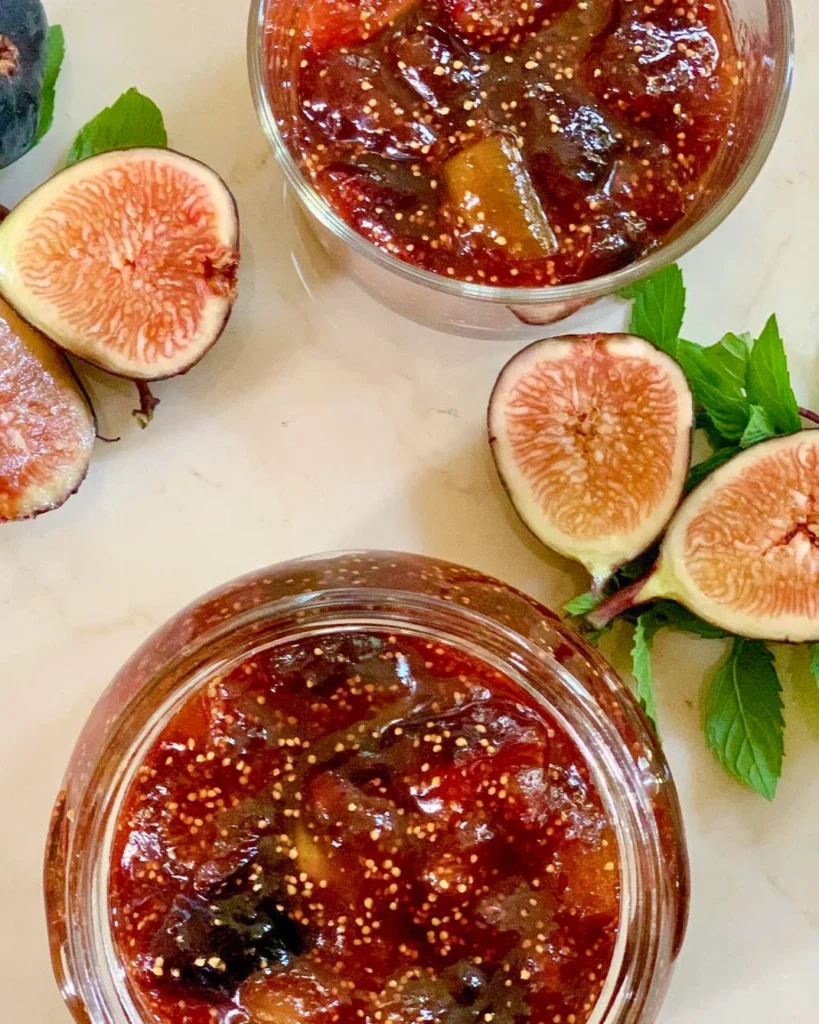
Making this jam is easier than you think, but it helps to follow a few key techniques to ensure the best results.
- Start by quartering your figs and placing them in a heavy-bottomed saucepan. Add the monkfruit, honey, and freshly squeezed lemon juice. The mixture will look chunky at first, but as it heats, the figs release their juices and everything begins to meld.
- Stir over medium-high heat until the monkfruit fully dissolves. Once the mixture comes to a boil, lower the heat to medium and let it simmer. The slow cooking is what transforms the figs into a thick, luscious spread. This process usually takes about 45 to 50 minutes.
- You’ll know the jam is ready when it coats the back of a spoon and holds its shape when dropped onto a chilled plate. Remove it from the heat, stir in the vanilla, and let it cool before transferring it into jars.
Once cooled, the jam should be stored in an airtight container in the refrigerator, where it keeps beautifully for up to three weeks.
Pro Tips for Success
- Use ripe figs. The sweeter and softer they are, the more flavorful your jam will be. Overly underripe figs won’t break down as well and can make the jam taste flat.
- Don’t rush the simmering process. That slow, steady heat is what thickens the jam and deepens the flavor. Turning up the heat too high can cause scorching.
- Taste as you go. Figs vary in sweetness, so you may want to adjust with a little more honey or monkfruit depending on the batch.
Delicious Variations to Try
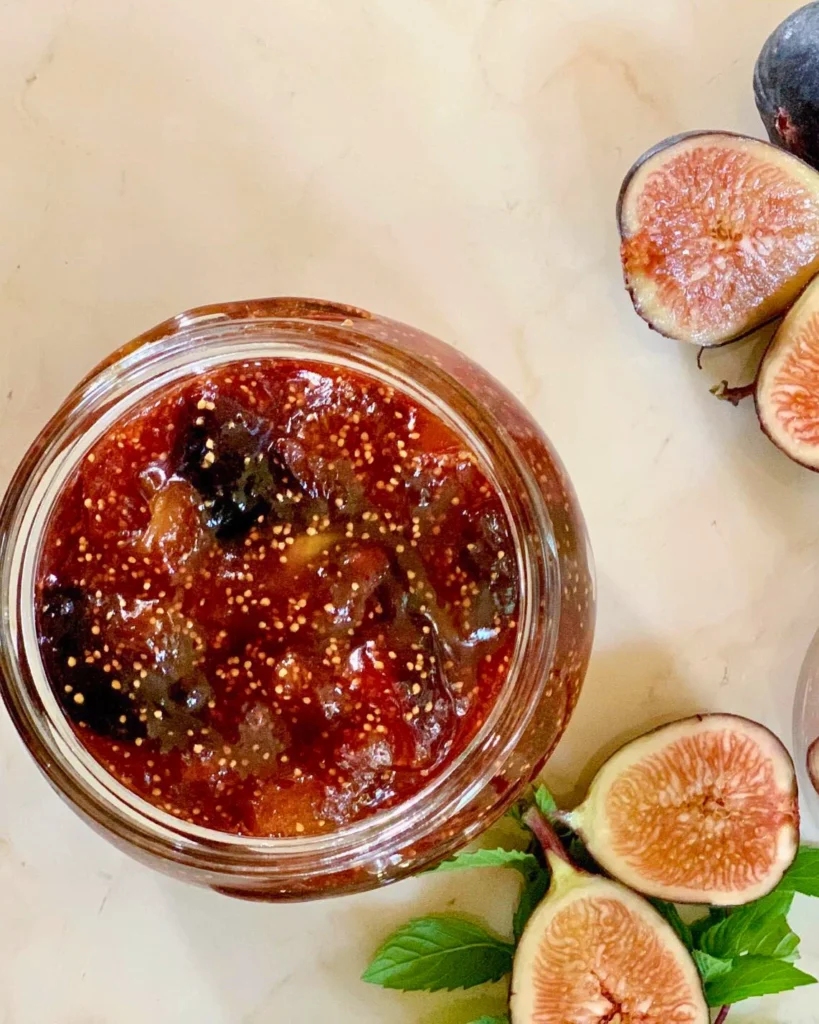
This recipe is incredibly versatile, and once you’ve made it once, you’ll probably want to experiment with different twists.
Some people love to add a splash of balsamic vinegar near the end for a deeper, almost savory note that pairs perfectly with cheese. You can also stir in a pinch of cinnamon or cardamom for a warm, spiced version that feels especially cozy in the fall.
For a citrusy variation, grate a bit of orange zest into the mixture while cooking. It gives the jam a fragrant brightness that works beautifully in desserts.
If you’re into creative pairings, you can even fold in a handful of chopped walnuts at the end for added crunch and richness.
Serving and Pairing Ideas
Homemade fig jam is endlessly versatile. It elevates simple breakfasts and adds a gourmet touch to entertaining.
It’s a natural partner for toast, English muffins, and scones, but don’t stop there. Spoon it over plain Greek yogurt for a quick snack, or use it as a glaze for roasted chicken or pork. It also makes a stunning pairing on a cheeseboard, especially with creamy brie, tangy goat cheese, or sharp cheddar.
For dessert lovers, try layering this jam between cake layers or swirling it into cheesecake batter. If you’ve ever enjoyed fig-filled cookies, you’ll know how beautifully figs work in baked goods.
Nutrition Breakdown
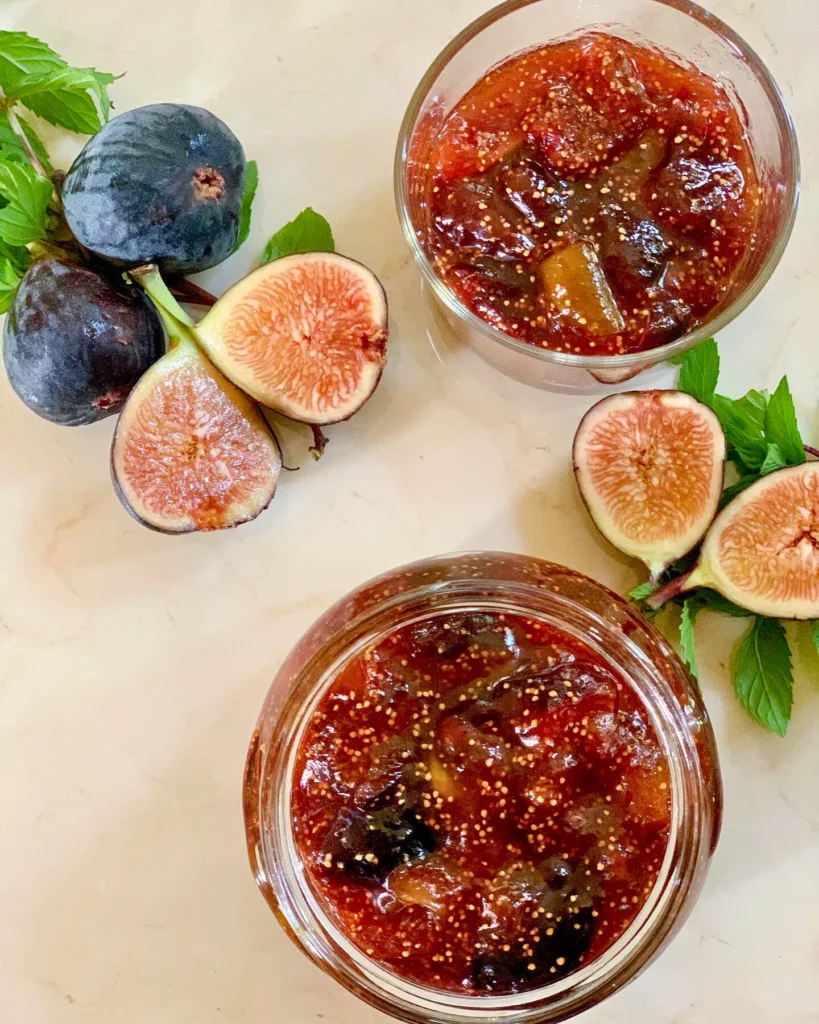
This jam feels indulgent, but thanks to the monkfruit, it’s actually a lighter alternative to traditional jams that often contain cups of refined sugar. A tablespoon of this jam contains natural fruit sugars, a touch of honey, and beneficial antioxidants from figs.
Figs themselves are rich in dietary fiber, which supports digestion, and they contain small amounts of essential minerals like magnesium, potassium, and calcium. Honey adds trace antioxidants and natural antibacterial properties. Compared to store-bought jams, this homemade version is not only fresher but also lower in calories and free of artificial preservatives.
Storage and Shelf Life
Homemade jam doesn’t last forever, but with proper storage, you’ll have several weeks to enjoy it. Keep the jam in clean, airtight glass jars in the refrigerator. Always use a clean spoon when scooping to avoid introducing bacteria that could shorten its shelf life.
If you’d like to store the jam for longer, you can freeze it in small containers. Simply thaw in the refrigerator overnight before using. While this recipe isn’t designed for long-term canning, it’s perfect for making in small batches and enjoying while fresh.
Troubleshooting Common Issues
Sometimes jam-making can be intimidating, but most issues are easy to fix. If your jam turns out too runny, it likely needed a bit more simmering time. Just return it to the pot and cook for another 5 to 10 minutes until it thickens.
If it’s too thick or stiff, you may have overcooked it. In that case, stir in a few tablespoons of water or a little extra lemon juice and gently reheat until it loosens up.
Overly sweet jam can be balanced with more lemon juice, while a jam that tastes too tart can be rescued with an extra drizzle of honey.
Final Thoughts
Homemade fig jam with honey and monkfruit is one of those recipes that feels both rustic and refined. It’s easy enough to whip up on a weekend afternoon, yet elegant enough to serve at a dinner party alongside artisan cheeses. Best of all, it’s naturally sweetened, customizable, and packed with the comforting flavors of fresh fruit.
If you love this recipe, you might also enjoy trying a batch of homemade apricot preserves or a quick strawberry chia jam for more fruity spreads. Once you start making jams at home, you’ll quickly see how rewarding and versatile they are—and you may never look back at store-bought jars again.
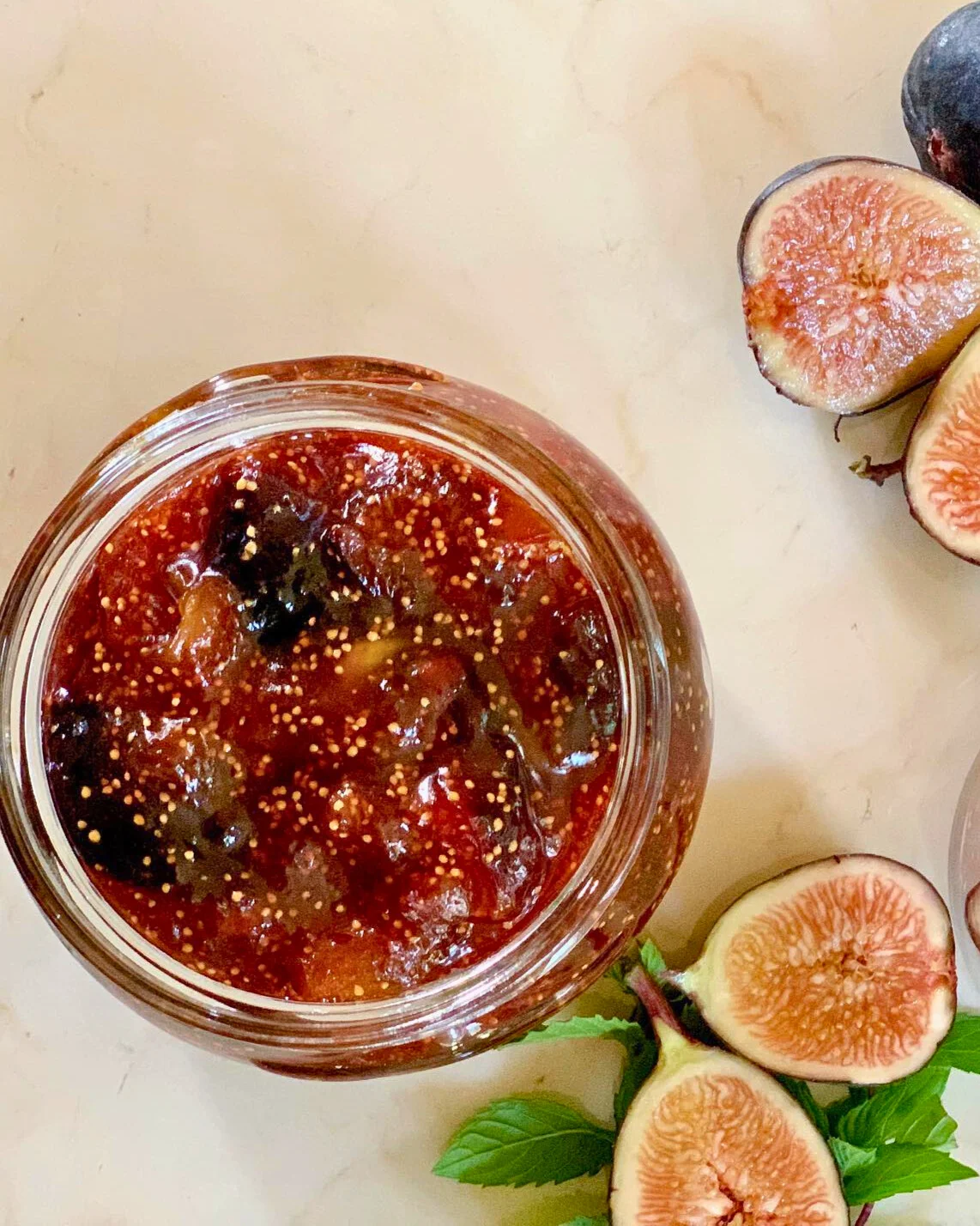
Homemade Fig Jam with Honey and Monkfruit
Ingredients
Method
- Place the figs, monkfruit, honey, and lemon juice in a large saucepan. Heat over medium-high, stirring until the monkfruit dissolves. Bring the mixture to a boil.
- Reduce heat to medium and simmer, stirring occasionally, until the jam thickens and coats the back of a spoon, about 45 to 50 minutes.
- Remove from heat and stir in the vanilla extract.
- Let the jam cool completely before transferring it into airtight jars or containers.
- Store in the refrigerator for up to 3 weeks.
Notes
- Use ripe figs for the sweetest, most flavorful jam. Underripe figs may result in a less sweet spread.
- For a vegan version, substitute maple syrup or agave for honey.
- If the jam is too runny after cooling, return to the pot and simmer longer until thickened.


Leave a Reply